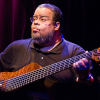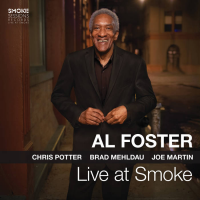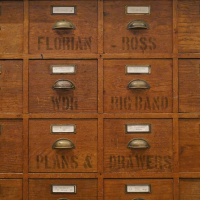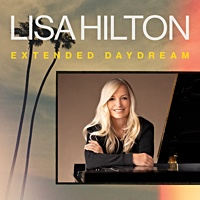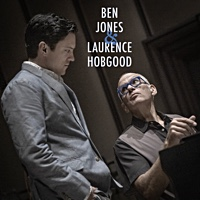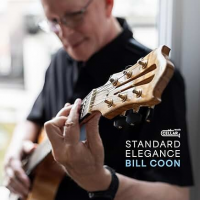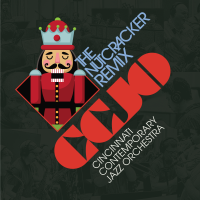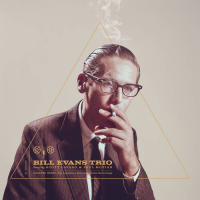Home » Jazz Articles » Multiple Reviews » The "Jazz Detective" Finds A New Muse, Reissues Lost Classics
The "Jazz Detective" Finds A New Muse, Reissues Lost Classics
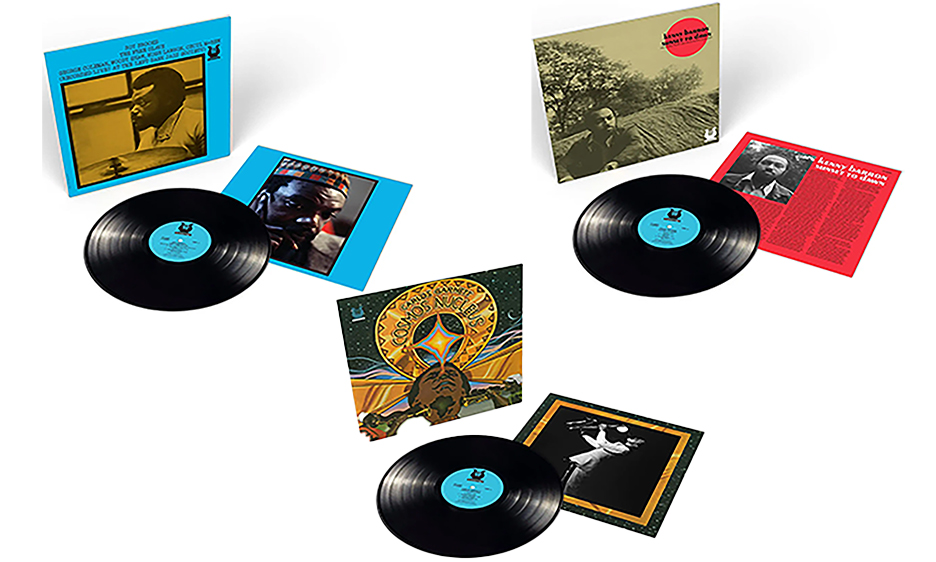
The first three LP reissues from the Time Traveler imprint indicate that, with a discography of 500 albums, the Muse Records catalog contains many classics ripe for rediscovery.
Why the new label? "The reality is not every recording is a great fit for every label," says Feldman, "and it's also a collaboration between me and the heads of the labels I work with. It takes a lot of work and patience to make sure these projects don't conflict with each other, but the one thing that's constant across the board is that I'm passionate about each project I work on and wake up every day on a mission to bring these important projects to light." Feldman was able to work from the original Muse master tapes, which were thankfully in good shape. "I wanted these reissues to have the best audio, so we had Matthew Lutthans [of The Mastering Lab in Salina, Kansas] cut lacquers all-analog direct from the master tapes," he relates. "We went to Stoughton Printing and used their high gloss Old Style tip-on jackets that they're known for. We even have new liner notes from writers Shannon J. Effinger, Ted Panken and Syd Schwartz, a statement from Joe Fields' son Barney Fields, and new photographs... I think these are better than the originals and I think a lot of people will agree. If you're into classic jazz albums, this is a great catalog... In many ways, it's an extension of the jazz family tree that evolved in the 1970s." All three LPs discussed here were flawlessly pressed by Optimal in Germany and the sound quality and sleeve presentation are, indeed, top-notch.
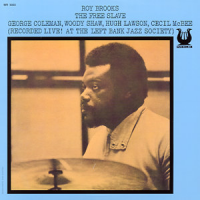 The Free Slave
The Free SlaveRoy Brooks
Muse Records
1972
Roy Brooks was a powerful Detroit drummer whose varied career encompassed stints with Yusef Lateef, Horace Silver (Brooks played on the sessions for the 1965 Blue Note classic Song For My Father), Sonny Stitt, Chet Baker, Charles Mingus, and Max Roach's M'Boom. On The Free Slave, recorded live at Baltimore's Left Bank Jazz Society in 1970 and released in 1972, Brooks fronts his own stellar band, including Woody Shaw on trumpet, George Coleman on tenor, Cecil McBee on bass, and pianist Hugh Lawson (who unfortunately and all-too commonly at jazz clubs of the period is given an instrument in need of tuning). The result is an exhilarating set of four long tunes, with the band egged on by a vocal crowd ("Come on, Roy... do your thing! That's what I want from you!")
The album begins with the 12-minute title track, which Brooks described as representing "One who has been cleansed of most negative obstacles in life and is only a slave to the Creator." It's a classic groover based on a bass/piano vamp maintained over Brooks' funky beat. Coleman, Shaw, and Lawson take relaxed solo flights over this minimal structure, with each section ending in a rhythmic breakdown, a pregnant pause that elicits anticipatory crowd reaction and a resumption of the vamp. "Understanding" is a bossa nova-tinged piece with a beguiling melody reminiscent of Brooks' time with Silver. Coleman plays a particularly expressive solo that caresses the contour of the tune, occasionally interjecting split harmonics and outside phrases. The rhythm section responds sensitively to Shaw's lengthy solo by varying the dynamics as the trumpet alternately takes center stage and blends into the ensemble. Brooks' quiet cymbal pulse foregrounds McBee's well-constructed bass solo, followed by a return to the theme and the close of the song signaled by the drummer's dramatic gong strokes. "Will Pan's Walk" is a blues-based McBee tune with a complex structure, taken at a faster pace than anything else in the set. Brooks' powerful swing, decorated by inventive fills, is in evidence as Shaw and Coleman contribute storming hard bop solos. The drummer's varied solo over sparse accents by Lawson and McBee elicits appreciative shouts from the audience, who are clearly in his corner throughout the set. Closing tune "Five For Max" pays tribute to Brooks' mentor Roach with a 5/4 samba groove. Coleman is effective here, but the sound of the Brooks' "Breath-A-Tone"—a device that allowed him to vary the pitch of a drum by exhaling through a tube to vary head tension—steals the show during his solo.
One of the first Muse LP releases in 1972, The Free Slave set a high standard for the label and its reissue provides a welcome opportunity to enjoy Roy Brooks, a jazz journeyman who should be better remembered than he is, as a drummer and bandleader.
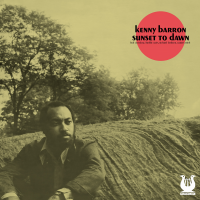 Sunset To Dawn
Sunset To DawnKenny Barron
Muse Records
1973
We now know pianist Kenny Barron as a 14-time Grammy nominee, a Fellow of the American Academy of Arts and Sciences, a member of the DownBeat Jazz Hall of Fame, an NEA Jazz Master, and a longtime professor at Rutgers University and the Julliard School of Music. In 1973, however, he was a 29-year-old, Philadelphia-born, NYC-based musician making his debut as a leader, following sideman stints with Lateef, Lou Donaldson, Roy Haynes, Lee Morgan, Stanley Turrentine, Dizzy Gillespie, and Freddie Hubbard. For Sunset to Dawn, Barron brought to NYC's RCA Studios Bob Cranshaw (known for his work with Sonny Rollins) on electric bass, drummer Freddie Waits (who had also played with Morgan and Hubbard) and two percussionists adding congas and vibraphone. Barron splits his time between the Fender Rhodes electric piano, which tends to obscure his recognizable touch ("I wasn't that enamored of [it]," says Barron in the new liner notes, "I was playing it a lot on recordings, not at my request, but the company's... I never owned one"), and the acoustic instrument he is most associated with.
The album opens, appropriately, with "Sunset"'s floating Rhodes introduction over which panpipes, vibraphone, and various percussion instruments trill. Cranshaw's electric bass establishes a repetitive figure, Barron vamps, and Waits establishes a great bossa-like groove. Whether he loved the instrument or not, Barron intuitively gets the best out of the electric piano, deftly employing its fuzzy bass notes and limpid higher end in exhilaratingly fast solo runs, and the tune glides by pleasantly. Barron's gorgeous acoustic piano playing makes one sit up a bit straighter as he essays the solo "A Flower." Despite its botanical title, the freely-flowing tune could also evoke a wistful remembrance of an autumnal NYC evening of twinkling lights, twirling ice skaters at the Rockefeller Center's rink, and couples strolling on a romantic evening. It's a highlight of the set. The Rhodes returns on "Swamp Demon," whose theme is a variation of the tune John Coltrane recorded as "Miles' Mode." Indeed, Waits and Cranshaw lock into a tight groove with the kind of episodic feel Miles Davis himself employed on On The Corner (which itself featured Muse label mate Garnett), though in a much less dense, more laid-back way. Barron effectively vamps and solos around the groove, but at less than five minutes the tune seems to end before it fully takes off. Side two opens with Waits' "Al-Kifha," a bracingly fast blues with the theme doubled by Barron on acoustic piano and Warren Smith on vibes. Cranshaw transfers a rapid hard bop bass line to the Fender with aplomb and Waits pushes the pianist to fantastic solo heights with his propulsive swing. The tune, named after the Arabic word for "struggling" according to the original liner notes by Gary Giddins, presents the best ensemble playing on the album by far. The lovely "Dolores Street S.F." features more of Barron's acoustic playing, a strong performance by Cranshaw, and the percussionists outdoing themselves with triangles, shakers, and congas that deftly enhance the melody without obscuring its wistful beauty. The album ends (no points for guessing!) with "Dawn," a Rhodes-led tune that is a delightfully percolating, up-tempo companion to the crepuscular "Sunset."
Sunset to Dawn is a strong debut by Barron, if caught somewhat uncomfortably between the hard bop and fusion worlds. About half of the album reveals Barron's unique voice and points the way to an immensely important career for the pianist. We can be grateful to Joe Fields and Muse for giving him the chance to launch his music as a leader in this way.
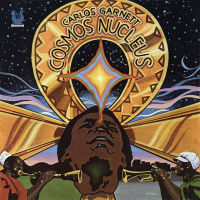 Cosmos Nucleus
Cosmos NucleusCarlos Garnett
Muse Records
1976
Three years later, Carlos Garnett's Cosmos Nucleus is firmly in the fusion bag, but with a difference: it's a big band featuring a seven-man trumpet section, eight saxophonists, and a trio of trombones accompanying the core band of Garnett, Otis 'Junior' McCleary on guitar, a young Kenny Kirkland on electric piano, Cecil McBee Jr. carrying on the Muse family tradition on electric bass, and Byron Benbow on drums with occasional help from two percussionists and vocalist Cheryl P. Alexander. It's a groovy, funky beast with wah-wah pedals to the fore and tunes that could be late-70s TV or movie theme songs. Garnett's excellent tenor and soprano sax and the horn section interjections root the music in jazz, while the sometimes-danceable rhythms, occasional vocals, and funk guitar reach out towards the R&B charts.
All six tunes on the album were written by Garnett, who says in the original liner notes: "I never even played with a big band before! But on each record I like to experiment." Opener "Saxy" is alternately gritty and breezy and sounds for all the world like the theme to a long-lost cop show about a detective who likes to get away from it all on his sailboat. The band is tight as a drum and Garnett's solo is superb, with a great tone captured well by the engineers at NYC's Dimensional Sound. The 12-minute title track is based around a two-chord vamp insistently played by McCleary and decorated on the electric bass, interrupted periodically by a jaunty big-band swing section. Garnett (on soprano), trumpeter Angel Fernandez, and Kirkland solo, with effective support from the horn section who hold the lengthy track together. On the calypso-tinged "Wise Old Man," Garnett sings (literally—this is one of two vocal tracks on the album) in gratitude to his many mentors. It's a catchy tune that also features solos by Fernandez and the leader on tenor. Flipping the LP over, another vocal track emerges, this time featuring Alexander on a jazz-funk tune ripe for sampling by an eager crate-digger. "Mystery of Ages" sounds like it could have found a home on R&B stations, albeit with an edit to shorten the 7-minute run time that allows for nice solos by trombonist Andrew Washington and Kirkland. "Kafira" brings a return to mainstream jazz with a beautiful chord structure and a long solo by Garnett, who dominates the piece, the big band being used to add colorful washes in support. There is a nice change near the end where McCleary and the rhythm section move to a more emphasized beat, spurring Garnett to new solo heights. The album comes to a close with "Bed-Stuy Blues," but there's nothing simple about this blues. The horn section begins by outlining a bright progression with tight rhythmic accents from Benbow and McBee, Jr. before the tune relaxes into a swinging blues groove. Excellent solos by Al Brown on alto, Wayne Cobham (Billy's brother) on trumpet, Zane Massey on tenor, and James Stowe on trombone are supported by effective pads and stingers from the big band. It's the most straightforward jazz piece on the record and closes it in exciting fashion.
Taken on its own terms, Cosmos Nucleus must be considered a successful experiment by Garnett. There is some great playing by the core band as well as the larger horn section, and the texture remains open and clear, far from the thorny thickets of dense sound that Miles Davis was creating around this time.
With a total discography of around 500 albums, the Muse Records catalog surely contains many more gems ripe for polishing by Feldman. If these first three LP reissues are any indication, fans of classic jazz will have much to look forward to from the Time Traveler imprint.
Tracks and Personnel
The Free SlaveTracks: The Free Slave; Understanding; Will Pan's Walk; Five for Max
Personnel: Roy Brooks: drums; Woody Shaw: trumpet; George Coleman: tenor saxophone; Hugh Lawson: piano; Cecil McBee: bass
Sunset to Dawn
Tracks: Sunset; A Flower; Swamp Demon; Al-Kifha; Delores S.F.; Dawn
Personnel: Kenny Barron: piano; Bob Cranshaw: bass; Richard Landrum: percussion; Freddy Waits: drums; Warren Smith: drums
Cosmos Nucleus
Tracks: Saxy; Cosmos Nucleus; Wise Old Men; Mystery of Ages; Kafira; Bed-Stuy Blues
Personnel: Carlos Garnett: tenor saxophone, soprano saxophone, ukulele, vocals; Otis 'Junior' McCleary: guitar; Kenny Kirkland: electric piano; Cecil McBee, Jr.: electric bass; Byron Benbow: drums; Neil Clarke: percussion; Gene Ballard: percussion; Cheryl P. Alexander: vocals; Cyril Greene: trumpet; Angel Fernandez: trumpet; Preston Holas: trumpet; Wayne Cobham: trumpet; Roy Campbell, Jr.: trumpet; Quentin Lowther: trumpet; Abdul Malik: trumpet; Charles Dougherty: alto saxophone; Al Brown: alto saxophone; Robert Wright: alto saxophone; Randy Gilmore: tenor saxophone; Zane Massey: tenor saxophone; Akum Ra Amen-Ra: tenor saxophone; Yah Ya: tenor saxophone; Carlos Chambers: baritone saxophone; Cliff Anderson: trombone; Andrew Washington: trombone; James Stow: trombone
Tags
Multiple Reviews
Joshua Weiner
Braithwaite & Katz Communications
Pat Martino
Cedar Walton
Carlos Garnett
Kenny Barron
Chick Corea
Walter Bishop, Jr.
Woody Shaw
George Cables: I Hear Echoes
Zev Feldman
João Donato
Clifford Jordan
Joe Chambers
Roy Brooks
Muse Records
Yusef Lateef
Horace Silver
Sonny Stitt
Chet Baker
Charles Mingus
Max Roach
George Coleman
cecil mcbee
Hugh Lawson
Lou Donaldson
Roy Haynes
lee morgan
Stanley Turrentine
Dizzy Gillespie
Freddie Hubbard
Bob Cranshaw
Sonny Rollins
Freddie Waits
John Coltrane
Miles Davis
Warren Smith
Otis 'Junior' McCleary
Kenny Kirkland
Cecil McBee Jr.
Byron Benbow
Wayne Cobham
PREVIOUS / NEXT
Support All About Jazz
 All About Jazz has been a pillar of jazz since 1995, championing it as an art form and, more importantly, supporting the musicians who make it. Our enduring commitment has made "AAJ" one of the most culturally important websites of its kind, read by hundreds of thousands of fans, musicians and industry figures every month.
All About Jazz has been a pillar of jazz since 1995, championing it as an art form and, more importantly, supporting the musicians who make it. Our enduring commitment has made "AAJ" one of the most culturally important websites of its kind, read by hundreds of thousands of fans, musicians and industry figures every month.



